Kevin Stoffel And Brent Hultman From Strong People Systems
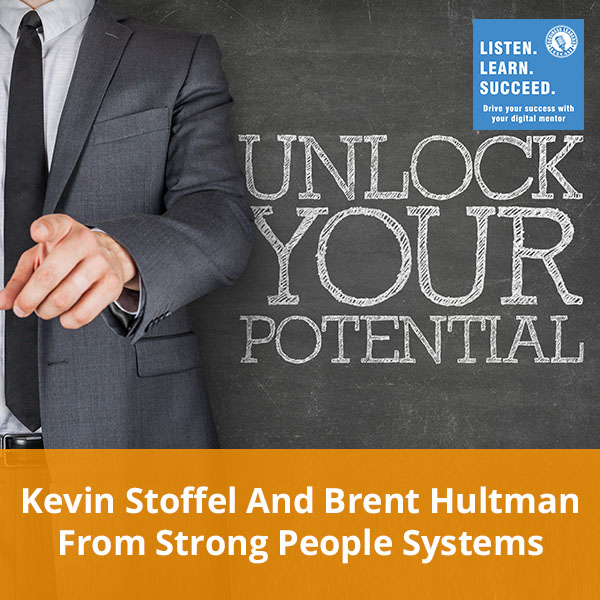
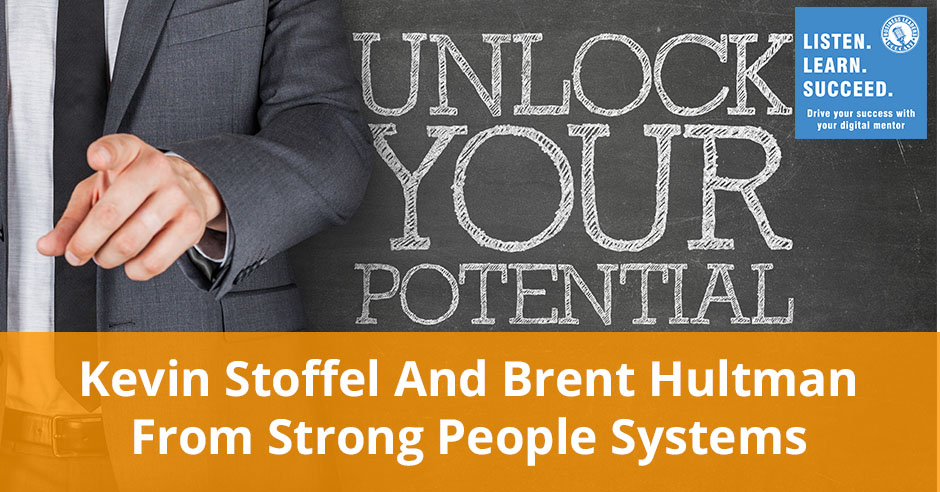
We often hear the saying, “Your business is just as good as the people in it,” yet many businesses still fail at finding the right kind of people in their team. As a result, they lag behind in efficiency and productivity. Kevin Stoffel and Brent Hultman from Strong People Systems give an overview of the issues that business owners are currently facing when it comes to their employees. They offer some great advice, insights, and tools that help solve problems in turnover and employee engagement. Highlighting the importance of identifying the true human potential of an individual, they bring forth the need for more objectivity into the hiring process. This does not only help the company go forward towards success but it is also a service to individual employees to truly load up on who they are truly meant to be.
—
Kevin Stoffel And Brent Hultman From Strong People Systems
We have two guests on the podcast, Kevin Stoffel and Brent Hultman of Strong People Systems there in the office from up north in the Denver area. Thanks so much for coming in.
It’s our pleasure to be here.
Tell us a little bit about your business and who you serve.
We are Strong People Systems and we focus on unlocking human potential. It falls into two areas, working with small and medium-sized companies. We help companies bring some objective data into the hiring process, do a better job of getting the right people on the bus, to go along with the subjective resumes and interviews, where people look great on a resume and interview like a rock star but then turn out to be somebody else when they got on the job. We bring some objective data into that process using some pre-employment screening assessments and then working with existing staff to develop the potential of those people. If we ask the question to most of us, “Are you living up to your potential?” most people say, “Not really. There’s more I could give, more I could do, more I could achieve, if I can get out of my own way.”
One of the reasons that we typically don’t work with larger enterprises and large companies even though that’s my background is that we realized everybody says, “Our people are our most valuable asset,” but then if I ask the leader to demonstrate how they do that, I’ll catch them flatfooted. Most big companies say that but then they have a hard time demonstrating that they truly do it. We’re not willing to engage with a client that’s not serious about developing people. If they want us to go fix their people and they say, “We need you, go fix my people,” that’s a non-starter. We won’t sign a contract in that case.
When it’s a “Fix my people” attitude or mentality or thought process, I always tell people to be careful when you point the finger of blame at people because there are three fingers pointing back at you. There’s a lot of truth in that.

What’s your prototypical size business? How many employees? What kind of revenue?
We usually go by employees on that question because depending on the type of business you’re in, revenues can vary greatly. Ideally, our targeted clients are between 25 to 500 employees. We work with clients smaller than that and clients bigger than that. It’s about working with individuals or teams within those organizations to unlock their potential, the talents that are already there.
For the business owner that reaches out to you to bring you on board, what typical pain points or problems are they trying to solve when they reach out to you?
It’s one or two things, it’s, “I’m stuck. I’ve either plateaued or there are outcomes we have to accomplish that aren’t happening and they should be. If I could, I’d fire everybody and start over but I can’t, therefore I’m in enough pain with my current team that I’m willing to take a risk on investing in them.” The cool news is that once they look at doing an engagement with us, they’re amazed at how the potential of people they already had in place that they wanted to get rid of have the right stuff. It was just being interfered with by different people’s fears and head trash caused by the current cultural situation within the company.
The other thing that they are oftentimes dealing with is turnover. Turnover and employee engagement, they can’t figure out why. Why are they losing people? In the Gallup poll every year for over fifteen years now, only about 30% of employees are engaged in their position or in their job. About 50% are disengaged, another 20% or 30% are sabotaging the organization where they’re trying to bring their organization down by bringing more people on that negative bandwagon. When you get 70% of your workforce that’s disengaged or actively disengaged, that’s a real problem to achieving the performance that they’re looking for as an organization.
I think about that as a business. I’ve reached out to you, you’ve come on board and I’m sitting in the office and you have walked in. Walk me through that first engagement and then the subsequent process that you bring to bear.
It begins with getting at is this a good fit? Seth Godin’s book, Tribes, describes are we of the same tribe? If there is not a connection to where what’s valuable to us is resonating with you, then we either need to get to a place where there is that connection or recognize that it’s not a good fit between the two organizations. With that, we jump right into looking at do you have good clarity around the strengths, the values and the why of your organization and of yourself? If that’s in good order, then it’s typically about the strengths, values and the why of the people on the team. The disengagement is a result of the fact that you’ve got things figured out but it’s not connecting in those three areas for your team. It’s not truly a team, you just have employees who have strengths, values and a why that they maybe even aren’t in touch with it because few of us have taken the time to invest in ourselves to discover what our values, our strengths and our personal why is.
Maybe it would be useful to see if there’s a fit. Let’s say you came into my organization. I’m an autocrat and it’s my business and it’s very hierarchical. I’m the guy, I’m the rainmaker, I’m the operator and so on. You come in and go by my employees aren’t engaged. Is that your prototypical client or no?
It’s not uncommon at all. When I’m working with a CEO or a business owner, I understand what that looks like because I came out of thinking that’s the way you have to be to be a leader. I’ll start to have a conversation with you to say, “I get it. It’s exhausting though. You can never blink. You always have to be right. You always have to have all the answers. After a while, there are some levels of resentment because you start thinking, ‘What am I paying all these people for? I’m doing it all anyway.’” The reality is part of that is there’s something going on with the dynamic in your culture where you’re hanging onto things that you have hired people to take on. There’s something there and so we need to explore that to figure it out. Out of that, is there stuff you’re even willing to do something about? Either you need to make some changes in what you’re expecting as far as outcomes go and engagement from your people or changes in the culture as far as how you engage with your people.
Your people are your most valuable asset.
We are no longer in the Industrial Age, which was a command and control hierarchical structure leadership and management model. We’re in a different age we call the participation age, information age, knowledge worker age, whatever label you want to put on it. We’ve got to move from this command and control structure where decision starts at the top. By the time it flows down to the bottom and you get a feedback loop, too much situation has changed too fast. We’re now in tough environment where you’ve got to work at a peer-to-peer collaboration level where you need everybody engaged. Telling people to do a job because I said so is not a good answer.
That’s a military model. Stan McChrystal did a good TED talk on that. Here I am, I’m the business guy. We’ve had the first interview and we’re in agreement, that you guys are on board. What are the next steps for that business owner and what you deliver?
We typically start with a survey we call Success GPS Survey or assessment. We have people take that either as an individual or as a team of individuals and aggregate the results of that. It gives the business owner a look into where are they as an individual at relative to what we call our GPS model, which stands for Great People System Energy Model. Where are they at relative to their own energy cycle or path? Where is their team at and where are their people at so that they can know, are they in a positive energy path? As an individual and as a team, are they getting what they want? Are things humming along or they on the stuck path where things are stuck or stagnant? Are they on the negative path, where they’re getting more of what they don’t want, which is the worst-case scenario of the different paths that an individual or a team can be on?
It starts with that. Take a look at where you are and where is your team’s at. From there, if they decide to engage us then we would move into looking at what are the strengths of the individuals. The team is a bunch of individuals that need to have real clarity around who they are from an innate strengths perspective versus what they have been conditioned to be as we start to move into looking at that aspect of things. That’s so foundational to all of us as an individual. Are we playing from our strengths or are we playing from who we’ve been conditioned to be? If we’re playing on who we’ve been conditioned to be, oftentimes that results in an internal struggle, “Nature says I’m this, but society or conditioning says I’m that.” Those are different things that create an internal tug of war. We’ve got to get people to their authentic self first and that’s the foundation where everything else builds from.
You assess and you have your process for assessment. Once you assess and let’s say I’m on that 50-person organization and you have the assessment on all the players. You come back in with past assessment to diagnosis or regimen. What’s the next step after diagnosis?
At that point we’re into what we call LEAP, Leaders Equipped to Actualize Potential. That program can be for a business owner or CEO. It can be for their executive team. It can be for the entire organization, depending on the objectives of the of the client. What it does is it takes that awareness of where I’m either aligned in a positive way or I’m stuck or I’m on a negative path. I’ve got some clarity around, “Now I get it why most of my people are disengaged. I’m frustrated because I have high turnover and these are the places where I’m naturally very strong. These are the things that I learned how to be good at.” This applies to the CEO, to their senior team, whoever it is that we’re working with. Where it’s like, “Now that I’m aware of who I truly am, my innate strengths, that’s stronger because I’m playing from who I am.”
That’s energizing and sustainable but I’m also clearer on what’s conditioning. It’s stuff I’ve learned how to do and I’m probably good at it. If I’m playing from my strengths, when I need to use that conditioning as a tool, then I’m more powerful. I’m stronger in every avenue because I’m in a sustainable place being who I am playing from my strengths. I’m aware that my conditioning is a toolkit. I use the analogy of a sledgehammer. If I need to tear down a wall, I’ll pick up a twenty-pound sledgehammer and I’ll take down the wall but I recognize it’s a tool with limited use. When I’m done with that wall, I’m putting that thing down because it’s heavy. It is exhausting to carry it around and it’s limiting. If I took out the wall, your next thought is you need to give me a pat on the back. You don’t want me coming at you with a sledgehammer.
You diagnosed, you come in and look at the team with some prescription. What do you do after that in the company to monitor or measure progression?
We’re working with the individual and/or the team. Let’s go with a team. We’re working with that group of leaders on two levels. We’re working in a workshop environment for typically seven sessions where they all together gain a cultural container. That’s a certain vocabulary around personality types and strengths around this whole idea of being on a positive energy path or being stuck or being on a negative path. As far as the generator, which is the why, the strength, the values, all these elements, they have this context that they’re working from. In addition to that, we’re working with each of them on an individual basis where we’re helping them get out the stuff that’s in their way, the head trash if you will, that is the self-limiting beliefs and the emotional responses.
Often, there’s the stuff we know and we know we could or should do and we just don’t. It’s a subconscious barrier that we can’t fix but we’re equipped to come in and work with them on a one-to-one basis so that it gets fixed. That gives them a stronger position to continue to build their engagement with the whole. It’s that safe zone where if you’re the CEO, your team doesn’t have to know what you’re afraid of but you get a chance to deal with that and get it out of your way.
When you go through this process with the business owner, what are the common preconditioned and postcondition effects? What do they say or what do you hear when you’re talking to the customer before you get started and when you get down with them?
 Strong People Systems: Few of us have actually taken the time to really invest in ourselves, to discover what our values and strengths are, and find what our personal life is.
Strong People Systems: Few of us have actually taken the time to really invest in ourselves, to discover what our values and strengths are, and find what our personal life is.
There’s this a-ha moment that occurs oftentimes in the team environment. A lot of times in the coaching component as well. As an example, one of our clients said one time at the end of the program, “When I went into this, I thought it was going to be the typical leadership professional development type of training stuff that I’ve been through before.” She said, “This was more of a self-discovery process.” That a-ha discovering of who you are as an individual and investing in yourself the time and energy to do that, it is a process and it was an a-ha moment, “I thought I knew myself but at 53 years old, I’ve met myself the first time.”
It’s that kind of moment is what we’re about. People go, “Wow.” We like to say that as we increase awareness, understanding grows. As we increase understanding, acceptance grows. As we increase acceptance, kindness grows. When we have that level of awareness, understanding, acceptance and kindness towards ourselves, then that’s the first a-ha moment. Once we have that for ourselves then now, we can have an awareness, understanding, acceptance and kindness towards others. That’s where relationships start to form and develop and become more available. That’s when teamwork starts to happen. That’s when the organization starts to unlock the potential of the team, the individuals, as well as the team. When you got those foundational levels such as those relationships, teamwork can happen.
It’s not uncommon for us to have a situation where there is that exhausted business owner or CEO who feels like they’re paying a lot of payroll and not getting a lot of outcome at the start. Then they’re amazed at the end of the process at how they’ve changed their personal perspective and their engagement with their people and how much value their people are contributing. They had no idea those people had the ability or the potential to even come in and to strategically deliver and to go beyond what they had expected from those folks.
When they go through it together as a team like that, they’re all doing it together and they’re learning this stuff about themselves and each other together. It creates much more transparency and the ability for people to be vulnerable with each other. When you get a team of people that can be vulnerable to each other in a business setting, that’s when the magic starts to happen as well. Most situations in a business environment are not safe to be vulnerable because we’re going to protect ourselves.
The discovery of who you are is an ongoing process.
For the businesses that go through the process, when you come back to visit with them at some point, what do they typically see either in their revenue stream? What do you see as far as the bottom line change after they go through your process?
That can vary an awful lot because if you’re in pretty good shape and you’re going from good to great, then it’s going to be a smaller delta. If you’re stuck or you’re in a bad place, it can be huge. Generally speaking, expect 10% to 20% shift simply because there’s that engaged, disengaged, actively disengaged spectrum. If you can reduce and ideally eliminate the actively disengaged and build a strong healthy culture of openness, it makes it hard for people to be actively disengaged. If you get rid of that 20% or 30%, you’re going to get easily 10% or 20% gain. We always encourage our clients as we work with them, if they haven’t yet benchmarked with key performance indicators around the things they want to be paying attention to, then we baseline that and they continue to monitor it.
Just because you get on a positive path doesn’t mean you can put it on autopilot and ignore it. You need to be paying attention. When things start to shift, you can circle back and utilize that same approach that we teach in the LEAP program to say, “We expected this but we’re not quite there. Why is that?” It’s not you failed, “We missed this or I own it.” I said, “I thought I got that, but it is clear that there was some vision there from the CEO that I missed. I thought it was delivering and there’s a gap so let’s fix them.”
Do you find that business owners will engage you that are considered new strategic selling three, five, seven years down the road, they bring you on board to change their intangibles?
That’s ideal because when we first put the company together, working with merger and acquisition folks, one of the things that were apparent is there are a lot of times where there is this vibe that the best people start to pick up on late in that process. It’s like the rats abandoning the ship where they know there’s something up and they’re out of there. Whereas if you’ve created this vulnerability in a safe zone and this engaged culture, then you’re creating a sustainable situation that’s bigger than the owner himself. We’ve experienced that where we’ve had organizations that suffered through some transitional leadership, not with a private company but with CEOs. The team and the culture were stronger than a bad CEO. The board had made what they thought was a good hire but it turned out to be a disaster.
The team was able to stay strong and carry through in what could have otherwise been a catastrophic situation with the loss. In one case of two times where they have a CEO issue and the team was stronger than either of those people. The board and the staff were able to continue on with the strong organization in spite of the fact that the key person, two times in a row, turned out to be a mistake.
For the folks going, “How do I find you, guys?” How do they find you on social media? What’s the proper website?
Our website is StrongPeopleSystems.com.
You are both on LinkedIn as well. It’s Kevin Stoffel and Brent Hultman on LinkedIn.
We’re both on LinkedIn and on Facebook as individuals. I’m on Twitter under my name and we also have a Strong People Systems Facebook page.
We’re going to the part where I get to quiz you to death. What’s a recent book or something that was influential in print that changed how you thought about your role?
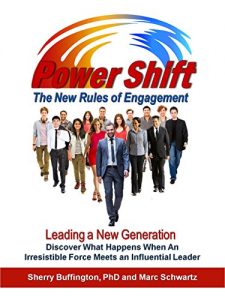 Power Shift: The New Rules of Engagement
Power Shift: The New Rules of Engagement
What comes to mind for me is a book called Powershift. It’s about the shift that’s happening in the workforce in the marketplace from the Baby Boomers and the Gen X-ers to the Millennial generation. The Millennial generation has a different set of generational values and they are changing the way business is done. I talked about it a little bit earlier in terms of the old industrial age mindset versus the new information or participation age mindset. The Millennials are driving that. They already are more than 50% of the workforce. They’re taking over, other than the sheer aspect of age. As Boomers and X-ers, we need to open up to what are the value sets of the Millennials. I like to say there’s a lot of negativity around the Millennial generation. We actually see the Millennials as a very positive influence. When I think about the Millennial generation and what they are asking for, they are asking for three things. They want to know why and “because I said so” is not a good answer.
The old industrial age mindset was like, “Push that button and pull this lever.” “Why?” “Because I said so. That’s what we’ve got to do to keep the factory line moving.” That’s not the case anymore. We want people to bring their minds to work. If the Millennials know their why, then they can solve problems and bring their technology savviness or their different way of looking at things to the marketplace. They want to be developed as human beings and that’s a big piece of what we do. They want to be developed as a professional. They want to grow and develop and grow as individuals. They want to be part of something larger than themselves in a cause or mission or vision. We’ve got to get clear about providing those three things for this next generation that’s taken over the workforce. If you think about it, if we ask any Boomer or Gen X those same questions, “Do you want to know why? Do you want to be developed? Do you want to be part something larger than yourself?” We would all say yes as well.
The difference with the Millennial generation is that if they don’t get those three things in a work setting or work situation, everyone will walk out the door and go find an organization that does provide those three things. Powershift is about what do we need to do and how do we need to shift our thinking to get in alignment with where the workforce is going. It’s where we need to go as Boomers and X-ers as well. If we’re staying in the workforce, we should do the business in the New Age, not in the old Industrial Age. That’s the book that comes to mind for me.
We always recommend, in fact, we buy copies of Marquet’s Turn The Ship Around and we give those to folks when they graduate from the LEAP leadership program. It does a nice job of articulating a lot of the concepts that are in the LEAP program. It’s that idea of driving decision and ownership and responsibility to the level that it belongs. It’s not, “Good ship, good captain, captain’s gone, bad ship,” situation but people own their stuff. If you’re the right person to solve something, it’s yours. You report up on it but you don’t have to wait for the boss to tell you. Also the idea of, “I intend to,” where if I work for you, I let you know I intend to do this, which gives you the chance to say, “You need to know about this other thing. If not, it’s mine. You don’t have to worry about owning my stuff because I do.” That’s the general thing we like people to have because it does a nice job and it’s a nuclear submarine story who could go wrong with that.
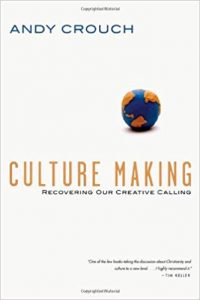 Culture Making: Recovering Our Creative Calling
Culture Making: Recovering Our Creative Calling
The other one for me is Andy Crouch’s Culture Making. The significant part in that is he talks about how there was a dynamic in a culture where it’s not this static thing where we can sit down and say, “Let’s create a culture and then invite others to it.” As soon as we invite others to it, it’s different. You recognize, as he articulated in the book, that what we make possible with culture, makes other things impossible. It helps us set more realistic expectations. The illustration in the book is the advent of highways and the great highway infrastructure in this country made lots of commerce and freight and safe transit between locations possible. By making that possible, it made traveling from Boston to New York on horse impossible. For leaders, for us to recognize that as we strive to accomplish new things and as we bring new people in order to do that, there’s an inevitability of cultural change and I like to compare culture to a garden. Either you’re tending it and you’re getting a lot of abundant produce or it’s a weed patch.
Looking over at your career, what’s a failure at the time or apparent failure that served you guys and your company well?
I resist the term serial entrepreneur but it’s descriptive because I have a checkered past. I’ve done a lot of things. I’ve had business successes and exited companies where I sold and made money. I’ve also had situations where I either took a job or launched something entrepreneurial. It fell flat and it cost me a ton of money. Having that spectrum gives you that understanding that as long as you’re moving forward and you’re not dead, you’ve got the ability to recover. It’s to get that resilience. Stuff didn’t always go my way. Looking back, I started that company and it failed. At the time you feel like that’s the end of it and I suck. The reality is that when you get over feeling sorry for yourself, there’s a lot to be learned. In the role that we have now with the company that we have, it’s easy to sympathize and to connect with the challenges folks have. If your business is at that point where you’re afraid it’s going to fail, that’s terrifying. To be able to say, “I get it, it’s probably not too far gone to save it. Even in those situations where it is, it’s not the end of the world.”
Magic starts when you get a culture of people who can be vulnerable with each other in a business setting.
I started discovering my why, my purpose in life, my calling if you will in the early 2000s. In 2003, I started to pursue that from a major career shift and direction. I realized it was going to take a while to build up the Executive Coaching Leadership Development. Initially, it was an executive coaching model, developed a client base to support me and my kids. I spend some time pursuing it, I realized that it’s going to take a while. I ended up taking a job with a friend of mine that got a company funded or whatever. I will continue to build that thing on the side. A year and a half later, that company I went to work for ran out of funding and had to declare bankruptcy. Here I was a year and a half later, back to the same starting point. I still have the necessary financial resources I needed to go off of my own, but it was back in the same place. It’s like this why that’s calling is still calling me.
If I would have paid attention a year and a half earlier, I should have stayed with the pursuit of my passion and not wasted a year and a half to only have a company go out of business anyway. Then had to be right back at the same place. I still got to figure out how to pursue my why, my passion. Finding that for all of ourselves is so critical to our success. Pursue the why, life is too short to live in somebody else’s dream or somebody else’s why or purpose or passion in life. You’ve got to live on your own.
If you could put an ad on the front page of the local business journal sharing your message or advice, what would it say and why?
My first thought was, “Two local boys do good, great results for many clients,” but that’s a little campy. For me, it’s thinking about the specific stories. We’ve got a testimonial. As it turned out, we’ve got an email from a client from a couple of years ago who is an accounting manager for one of our financial institutions’ clients. It’s totally unsolicited, she sends this email saying, “I’ve been reflecting a lot on the experience that I had with the Leaders Equipped to Actualize Potential. Through the LEAP program, I’ve been calling on that stuff and sharing it with other people here in the organization. I’ve realized what a significant change that’s made.” I would want to put her picture and her story of how she took the stuff that we did to help her be a good resource for her company and how she has applied it to every aspect of her life and how not only is she a more significant contributor. In fact, they moved her into her current position as a result of what they saw from her as a participant in the LEAP program. She’s fulfilling what makes sense for her where she’s playing from her strengths, giving a lot more value to the company and also taking all that same thinking and attitude and approach and applying it to every aspect of her life.
 Strong People Systems: As we increase awareness, understanding grows. As we increase understanding, acceptance grows. As we increase acceptance, kindness rules.
Strong People Systems: As we increase awareness, understanding grows. As we increase understanding, acceptance grows. As we increase acceptance, kindness rules.
When you asked that question, the first thing that popped in my head is the headline of the ad would be, “People are either your greatest asset or your greatest liability. Which do you want?” It all comes down to do you have the right people in the right roles, playing according to their strengths, their values, their why, with clarity around where they’re trying to go? They’re taking a bold and courageous action, doing so with a positive attitude. That’s the definition of being on a positive energy path. If people are on that positive energy path, they become very inspiring for other people who want to follow, whether that individual is in a position of leadership or not. Leadership is not about a position of authority. It’s not about authority or rank. It’s about leading yourself up. If people are leading themselves up, they’re your greatest asset versus if they’re just plugging along, showing up every day, collecting a paycheck, they’re your greatest liability.
That reminds me of a bagel shop in Denver that instead of the, “Employees must wash their hands” placards, it has a big colorful poster on the wall that said, “Great leaders wash their hands.” I like that place because I bet you everybody who works there washes their hands when they come out of the restroom.
For you guys, what’s the best time allocation or initiative that’s helped you guys the most with your company?
What comes for me on that is getting clarity on what are my strengths, what energizes me, which I boil down to the top three which are building and nurturing relationships so I have the opportunity to make new connections with business folks. Secondly is teaching people what makes them tick. That’s a big part of my why is teach people what makes them tick so they’re going to lock on their full potential. The third is learning more about what makes people tick so they have more to teach in the relationships that I have. The more I can allocate my time towards doing those three things, the more energy I have every day.
For me, the simplest way to put it is being disciplined about avoiding the tyranny of the urgent. I know what I need to get done and what’s important and valuable. I resist the urge of emptying my inbox of email. Something else is important but is not as mission critical as other things that I know truly are important. I keep my priorities to say, “Maybe if I don’t respond to you in the next 30 seconds, it’s not the end of the world because I’m in the middle of a thought. I want to get this piece of marketing, social media article finished.”
For you guys, what’s an unusual habit or what others may consider out of the ordinary that helped you guys the most with your business?
For me, it fits somewhat with the first answer I gave for the other question about the discipline. I start the day by feeding my soul. I do my personal devotional Bible study before I do anything else. That has made a huge difference because of my ability to engage that mindfulness, that presence and the call. That gives me the ability to lean into whatever is next based on taking that time to nourish myself spiritually. From there, I’m in a good place in every aspect of myself to move forward with whatever it is I need to accomplish that day.
I have always been a list maker if you will, trying to keep track of all the things that I need to get done. Oftentimes, I use that list to beat myself off the head that I didn’t get enough done on any given day. I started to practice having everything on one list all the to-dos that at some point, I need to get done. Then off that big master list, pulling off three for today. These are the three priorities for today. If I get these three things, then I’ll feel like I’ve had a good day. Then ignoring the rest of that laundry list that I can wait to make things on. Eventually, things are falling off of that because if they didn’t get done in the last three months, probably they’re not important anymore. That means that I will separate the big laundry list that all of us have to do to say, “What are the most three important things to do today?” That is a very beneficial practice for me.
I just want to throw in and Bob, you’ll relate to this being a veteran, is making the bed in the morning. There is some benefit that maybe the military figured out before the rest of us is, if you made your bed, you go out and the day is a complete disaster. You started the day well and when you come home to fall into bed, it’s right. You can start the day right and end the day right even if everything in between was a hot mess. Based on a lot of people, like my kids, making your bed in the morning is unusual.
As long as you’re moving forward and you’re not dead, you’ve got the ability to recover.
For you guys, what’s an advice you’d offer to a CEO that is assuming the role of CEO for the first time?
That’s something that comes up a lot for us. Recognize that you can do more with your people than you can on your own. If you don’t buy that, don’t hire them. Realize that things typically take longer than you expected. It costs more than you thought they would. Most of all, recognize that empowering people and creating an environment where you do have a high-performance team might look like people do things way different from how you would have. If you’re interested in the outcomes rather than in the process, embrace that.
To me, the number one thing that comes to mind is embracing the knowledge that you don’t have to have all the answers just because you’re the CEO of the organization. People are going to look to you for the answers but you’re not going to have them all. The sooner you recognize that you don’t have them all and open yourself up to be more vulnerable or transparent and to say, “I don’t know,” and be willing to invite your people into the conversation to help figure out what you think together is the best answer, that goes a long way.
What are common misconceptions about what you do or your role in your company?
Probably the biggest one, it goes back to that comment that Kevin referenced from one of our clients about expecting it to be your typical team building leadership development thing. We’re a different cap. That’s not what we’re about. We’re not about giving you a binder that says, “Here is the way you do it.” We’re about helping equip you and your folks with the ability to write your own book and update it as things change. It’s not, “There’s the program, it’s a one-size-fits-all.” It’s an engagement between us and you because until we’re working together, we can’t know what’s right as far as answering how to solve things for you until we know what’s at issue.
A lot of soft skills training and leadership development and team building professional development kind of work is what I call external or extrinsic skills and knowledge-based. We’re very intrinsic, “Who are you?” based. The hardest person to lead is yourself and because of that, we’ve got to go internal. We’re going to figure out what’s going on inside of us as individuals to be able to lead ourselves as well, so we can inspire the people who want to follow. It’s very intrinsic versus extrinsic approach.
Over the past few years, what would or should you have said no to and why?
 Strong People Systems: If you’re really interested in the outcomes rather than in the process, then embrace the knowledge that you don’t have to have all the answers.
Strong People Systems: If you’re really interested in the outcomes rather than in the process, then embrace the knowledge that you don’t have to have all the answers.
That is easy for me because it goes back to the prioritization. I read a lot and you have to look at everything that you take in through the filter of who you are and what you’re wanting. I went through a season where both of us fell victim to trying to be something we weren’t and trying to take on. It was failing to eat our own cooking basically, trying to take on things that aren’t what we’re about. That’s a good discipline to always have to say just because something looks like a good opportunity, is it your opportunity or is it a good opportunity for somebody else?
Recognizing when to say no to a prospect because they’re not part of our tribe. There have been a couple of instances where we’re trying to take on clients. We felt we needed the revenue and the opportunity was there, but they weren’t part of our tribe and it just wasn’t a good fit. Being able to say no to a prospect or even potentially firing existing clients is a huge lesson to learn in terms of saying no. No, that’s not going to be a good fit for them or for us.
That’s ultimately having the integrity to say, “I’m not going to just take your money because it’s obvious this isn’t going to give you the outcome you wanted. I’m going to be miserable while we’re at it.”
In the day-to-day operations of your company, what’s the personal habit or self-talk dialogue that keeps you guys focused and on task?
It’s using our own approach which is, “Am I being aligned around who I am as far as my why, my strengths and my values? Am I clear on pursuing my outcomes that I already know I’ve got? Are we doing the stuff that I need to get there? Am I engaged in a positive way and if I’m stuck or I’m heading negative direction, what’s going on?” It’s to be conscious about asking myself that same thing that we look for our clients to be asking themselves.
It’s to look at filtering mechanisms. Every decision, every opportunity, every shiny object, we both suffer from them. It’s a lot of entrepreneurial shiny object syndrome problem. Having the discipline to filter decisions and opportunities that present themselves through, “Does it align with our why, strength and values?” If it doesn’t pass through those filters, then it’s time to say no.
What’s great in paying it forward and networking is if it says, “No, it’s not me but how about you talk to this person?” That’s rewarding too.
If I was to talk to your colleagues and ask them what you guys were best at, what would they say and how do you guys utilize that strength on a day-to-day basis?
I always hear people would say that I’ve got a good ability to listen and tell people what they need to hear versus what they want to hear.
Leadership is not about a position of authority. It’s about being yourself so people are leading themselves.
I’ve given him that feedback myself. Kevin, if you can say something to someone and have them smile and say thank you, where they punched me in the face. What comes to mind for me is a colleague who works with family offices said “One of the things that’s unique about you guys is you can create that connection between a CEO or a wealthy family owned business leader or whomever it is, the captain or the boss of the thing and the people. You are able to talk at that strategic level with those key people and then you’re able to help them translate it into terms where the rank and file folks get it and aren’t scared away.” That’s a cool thing and that’s coming from somebody who works with a multi-generational, multi-enterprise, family dynamic situations.
Kevin, Brent, thank you so much for taking time out of your busy schedule down in Colorado Springs to be on the podcast. I appreciate you sharing your wisdom and insights.
It’s our pleasure. Thank you for having us.
Links Mentioned:
- http://StrongPeopleSystems.com/
- Strong People Systems
- Tribes
- Stan McChrystal– TED Talk
- Kevin Stoffelon LinkedIn
- Brent Hultmanon LinkedIn
- Brent Hultman on Twitter
- Strong People SystemsFacebook page
- Powershift
- Turn The Ship Around
- Culture Making
About Kevin Stoffel

While earning his black belt in Tae Kwon Do and teaching others in college, Kevin’s passion for unlocking human potential took root. Martial arts became a tangible experience of unlocking more potential in himself, and others, than he thought possible. After 17 years in an unfulfilling career working for others, his passion was re-ignited at a leadership development workshop at his last technology job. Now he is on an intentional journey unlocking his own untapped leadership potential and helping others to unlock their peak potential.
Kevin has 30 years of experience working with startups to Fortune 500s. As a Partner and Founder of Strong People Systems, a leadership development, training, assessment and coaching company, he is focused on unlocking your greatest untapped resource…your potential! A graduate of the University of Northern Iowa, Kevin has a degree in Computer Information Systems and Business Administration. He is a graduate of the Quantum Leap University coaching program and is a certified and licensed practitioner of COREMAP, RAMP and Success GPS assessments and coaching methodologies.
His passion is nurturing relationships with heart centered people, unlocking human potential, teaching others what makes people tick and equipping people to lead themselves well!
About Brent Hultman
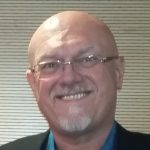
Culture is like a garden that has rich soil and plenty of water. Left untended it will grow but it will become overgrown with weeds; productive but not producing what you want. If it is tended it will produce an abundance of what you want. Your culture, like that garden, is a fertile environment. It will always produce something. If it is not tended it may produce outcomes that are not what you want. If it is tended it will produce what you expect and desire at levels that may surprise you. Our approach is to bring the right tools to help you weed your culture garden and to plant the seeds that will produce an abundant harvest.
My passion is helping people to discover and develop their potential to be true leaders. Equipping people to move from just getting by to discovering how much untapped potential they have within them is my lifework. My company’s programs empower people to engage new found leadership abilities to enhance their teams, families, and communities. With over 30 years of team building and leadership development experience, and the lessons learned along the way, I love to bring leadership development to folks involved with anything from Fortune 100 companies to start-ups, nonprofits, and youth organizations. True leadership makes it possible to build sustainable high-performance teams and to help those around us to realize their potential.
Love the show? Subscribe, rate, review, and share!
Join the Business Leaders Podcast Community today:
- businessleaderspodcast.com
- Business Leaders Facebook
- Business Leaders Twitter
- Business Leader LinkedIn
- Business Leaders YouTube
The post Kevin Stoffel And Brent Hultman From Strong People Systems appeared first on My podcast website.